Standard-Deviation-Based Adaptive Median Filter for Elimination of Batwing Effects in Step Microstructure Measurement Using Digital Holography
Abstract
:1. Introduction
2. SAMF for Batwing Elimination
2.1. Digital Holography for Microstructure Measurement
2.2. Sources of Batwing
2.3. Principle of SAMF
| Algorithm 1 Suppression of the batwing effect in microstructure measurement |
|
3. Experimental Studies and Analysis
3.1. Experiment 1: Measuring the Standard Resolution Target USAF 1951
3.2. Experiment 2: Measurement of the NIM Standard Artifact
4. Conclusions
Author Contributions
Funding
Institutional Review Board Statement
Informed Consent Statement
Data Availability Statement
Conflicts of Interest
References
- Jin, J.; Kim, J.W.; Kang, C.-S.; Kim, J.-A.; Lee, S. Precision Depth Measurement of through Silicon Vias (TSVs) on 3D Semiconductor Packaging Process. Opt. Express 2012, 20, 5011. [Google Scholar] [CrossRef] [PubMed]
- Zhang, W.; Xu, J.; Wang, S.; Zhou, Y.; Mi, J. Metrology Challenges in 3D NAND Flash Technical Development and Manufacturing. J. Microelectron. Manuf. 2019, 3, 1–8. [Google Scholar] [CrossRef]
- Kim, K.J.; Kim, T.G.; Kwon, J.-H.; Ruh, H.; Park, K.; Min, W.J. Traceable Thickness Measurement of Ultra-Thin HfO2 Films by Medium-Energy Ion Scattering Spectroscopy. Metrologia 2020, 57, 025001. [Google Scholar] [CrossRef]
- Häusler, G.; Willomitzer, F. Reflections about the Holographic and Non-Holographic Acquisition of Surface Topography: Where Are the Limits? Light Adv. Manuf. 2022, 3, 226–235. [Google Scholar] [CrossRef]
- Zheng, C.; Jin, D.; He, Y.; Lin, H.; Hu, J.; Yaqoob, Z.; So, P.T.C.; Zhou, R. High Spatial and Temporal Resolution Synthetic Aperture Phase Microscopy. Adv. Photon. 2020, 2, 065002. [Google Scholar] [CrossRef] [PubMed]
- Wang, C.; Wang, W.; Wei, J.; Wu, J.; Zhang, X.; Zheng, H.; Wang, F.; Yu, Y. Phase-Based Reconstruction Optimization Method for Digital Holographic Measurement of Microstructures. Appl. Opt. 2023, 62, 4530. [Google Scholar] [CrossRef] [PubMed]
- de Groot, P.J. A Review of Selected Topics in Interferometric Optical Metrology. Rep. Prog. Phys. 2019, 82, 056101. [Google Scholar] [CrossRef] [PubMed]
- Liżewski, K.; Kozacki, T.; Kostencka, J. Digital Holographic Microscope for Measurement of High Gradient Deep Topography Object Based on Superresolution Concept. Opt. Lett. 2013, 38, 1878. [Google Scholar] [CrossRef] [PubMed]
- Kim, H.-W.; Cho, M.; Lee, M.-C. Image Processing Techniques for Improving Quality of 3D Profile in Digital Holographic Microscopy Using Deep Learning Algorithm. Sensors 2024, 24, 1950. [Google Scholar] [CrossRef] [PubMed]
- Ma, X.; Xiong, R.; Wang, W.; Zhang, X. Flexible Measurement of High-Slope Micro-Nano Structures with Tilted Wave Digital Holographic Microscopy. Sensors 2023, 23, 9526. [Google Scholar] [CrossRef] [PubMed]
- Zhang, J.; Yuan, Q.; Fan, X.; Chen, L.; Lei, L.; Fu, Y.; Xu, Z.; Ma, J.; Gao, Z. Quantitative Evaluation of the Batwing Effect on Depth Measurement in Coherence Scanning Interferometry for Rectangular Gratings. Photonics 2024, 11, 341. [Google Scholar] [CrossRef]
- Li, Y.; Yang, Y.; Liang, Y. Batwing Elimination Algorithm Based on the Haar Wavelet in White-Light Interferometry. Appl. Opt. 2024, 63, 611. [Google Scholar] [CrossRef] [PubMed]
- Xie, W.; Lehmann, P.; Niehues, J.; Tereschenko, S. Signal Modeling in Low Coherence Interference Microscopy on Example of Rectangular Grating. Opt. Express 2016, 24, 14283. [Google Scholar] [CrossRef] [PubMed]
- Xie, W.; Lehmann, P.; Niehues, J. Lateral Resolution and Transfer Characteristics of Vertical Scanning White-Light Interferometers. Appl. Opt. 2012, 51, 1795. [Google Scholar] [CrossRef] [PubMed]
- Lehmann, P.; Tereschenko, S.; Xie, W. Fundamental Aspects of Resolution and Precision in Vertical Scanning White-Light Interferometry. Surf. Topogr. Metrol. Prop. 2016, 4, 024004. [Google Scholar] [CrossRef]
- Sun, Y.; Gao, Z.; Ma, J.; Zhou, J.; Xie, P.; Wang, L.; Lei, L.; Fu, Y.; Guo, Z.; Yuan, Q. Surface Topography Measurement of Microstructures near the Lateral Resolution Limit via Coherence Scanning Interferometry. Opt. Laser Eng. 2022, 152, 106949. [Google Scholar] [CrossRef]
- Huang, H.; Yuan, E.; Zhang, D.; Sun, D.; Yang, M.; Zheng, Z.; Zhang, Z.; Gao, L.; Panezai, S.; Qiu, K. Free Field of View Infrared Digital Holography for Mineral Crystallization. Cryst. Growth Des. 2023, 23, 7992–8008. [Google Scholar] [CrossRef]
- Wang, C.; Yu, Y.; Zhang, X.; D’Amato, R.; Gomez, E. Effects of Mathematical Models and Algorithms on Quantitative Characterization of Areal Step Height with Optical and Stylus Profilometers. Precis. Eng. 2021, 72, 777–788. [Google Scholar] [CrossRef]
- Wang, C.; Meng, X.; Krolczyk, G.; Wei, H. A Cluster-Based Method for Quantitative Characterization and Uncertainty Evaluation of Areal Step Height in Structured Surface Metrology. IEEE Trans. Instrum. Meas. 2022, 71, 1–9. [Google Scholar] [CrossRef]
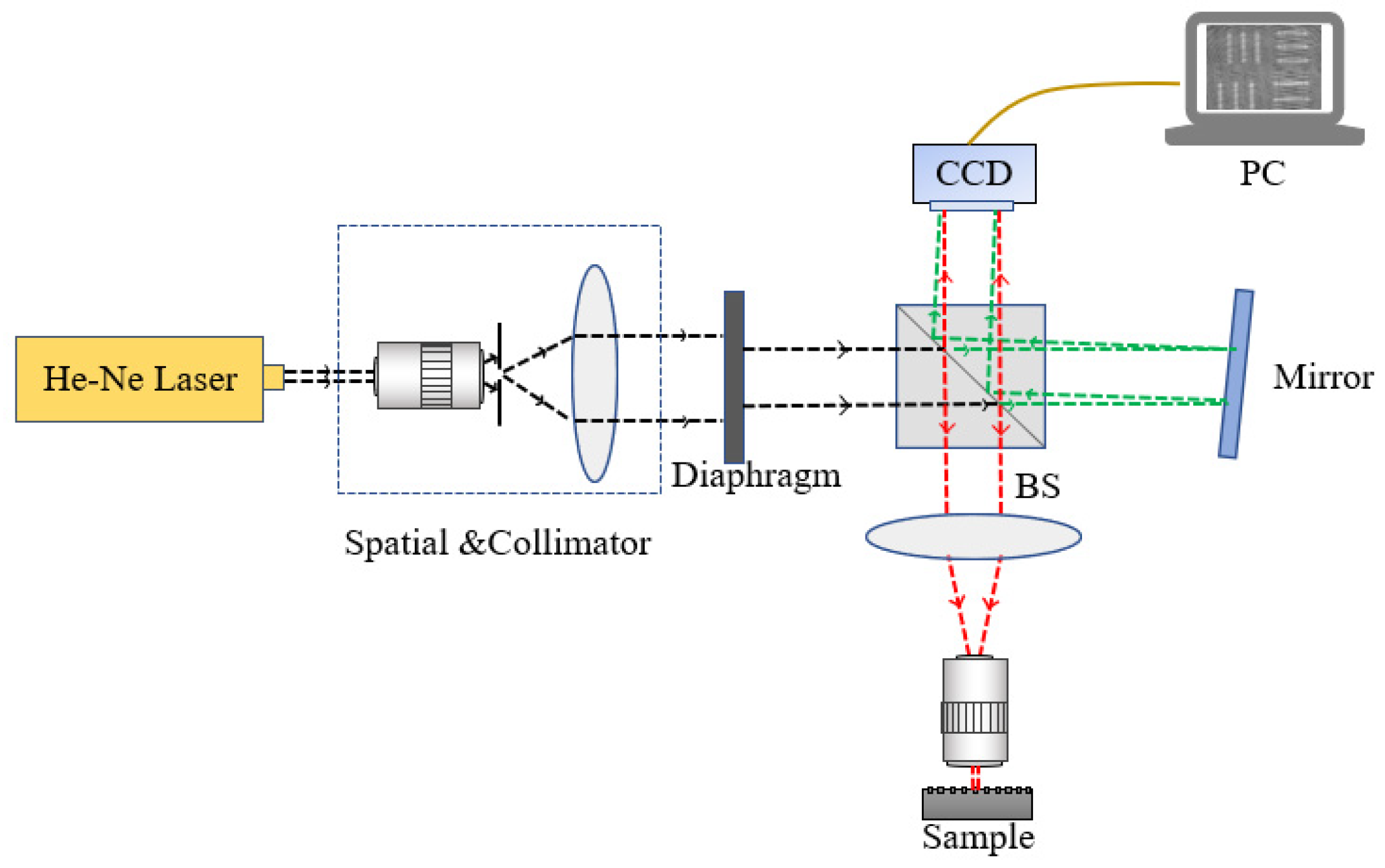

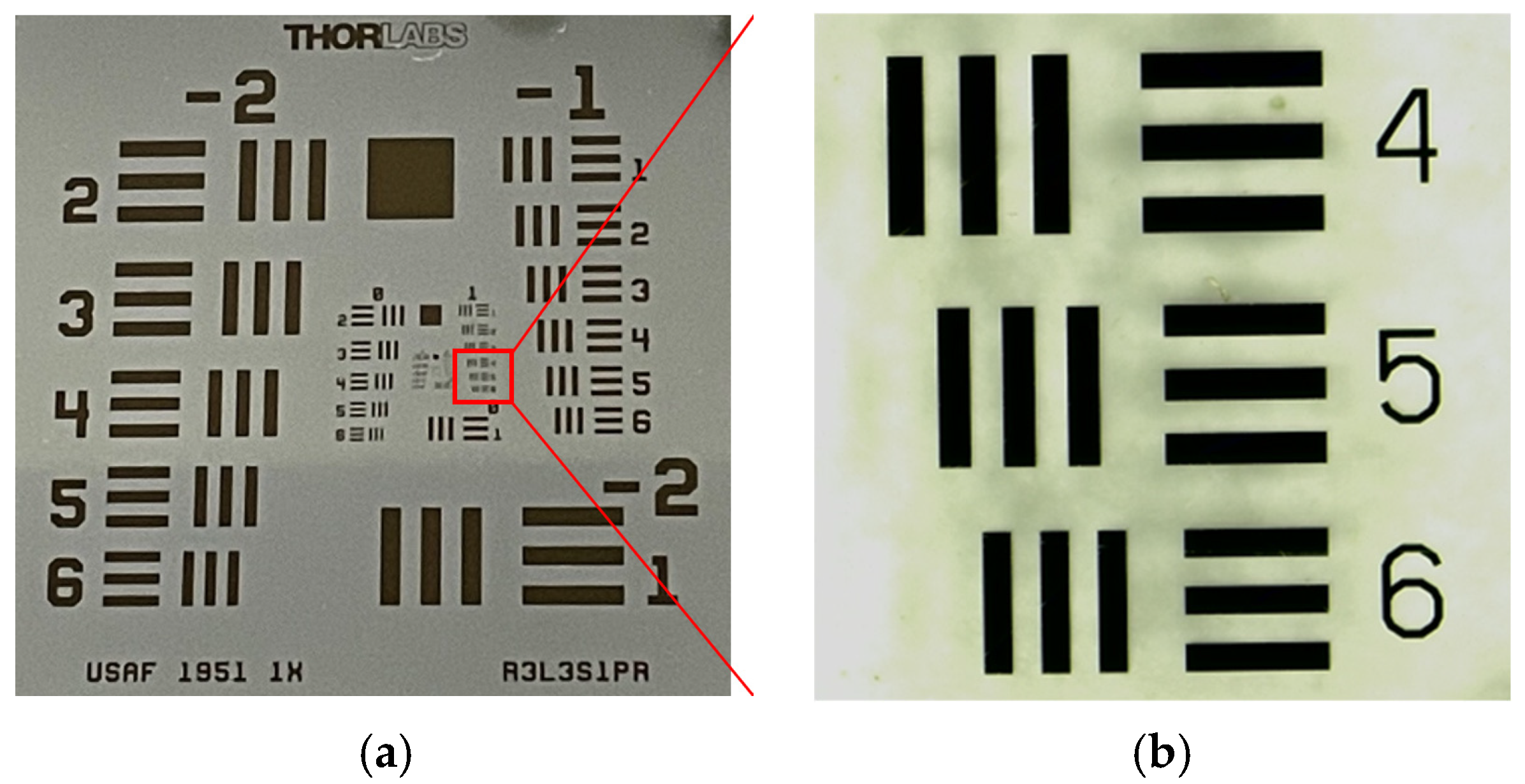

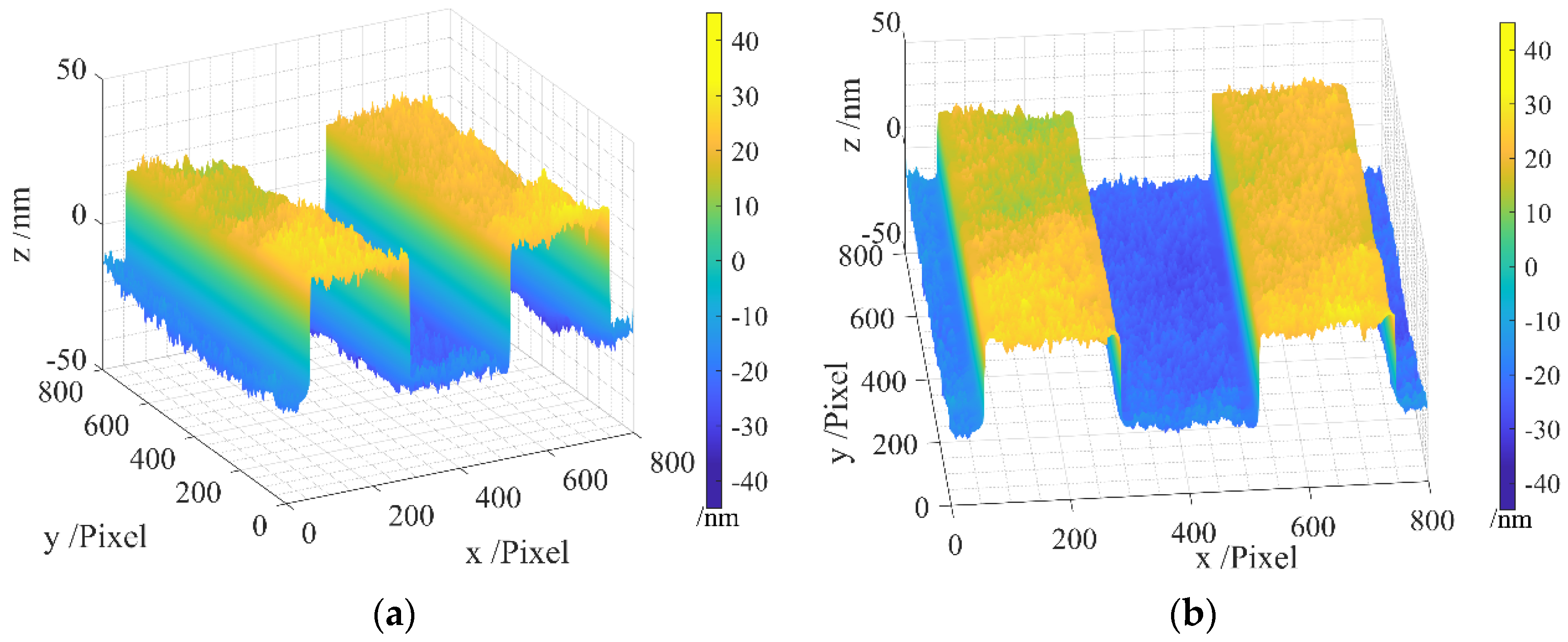
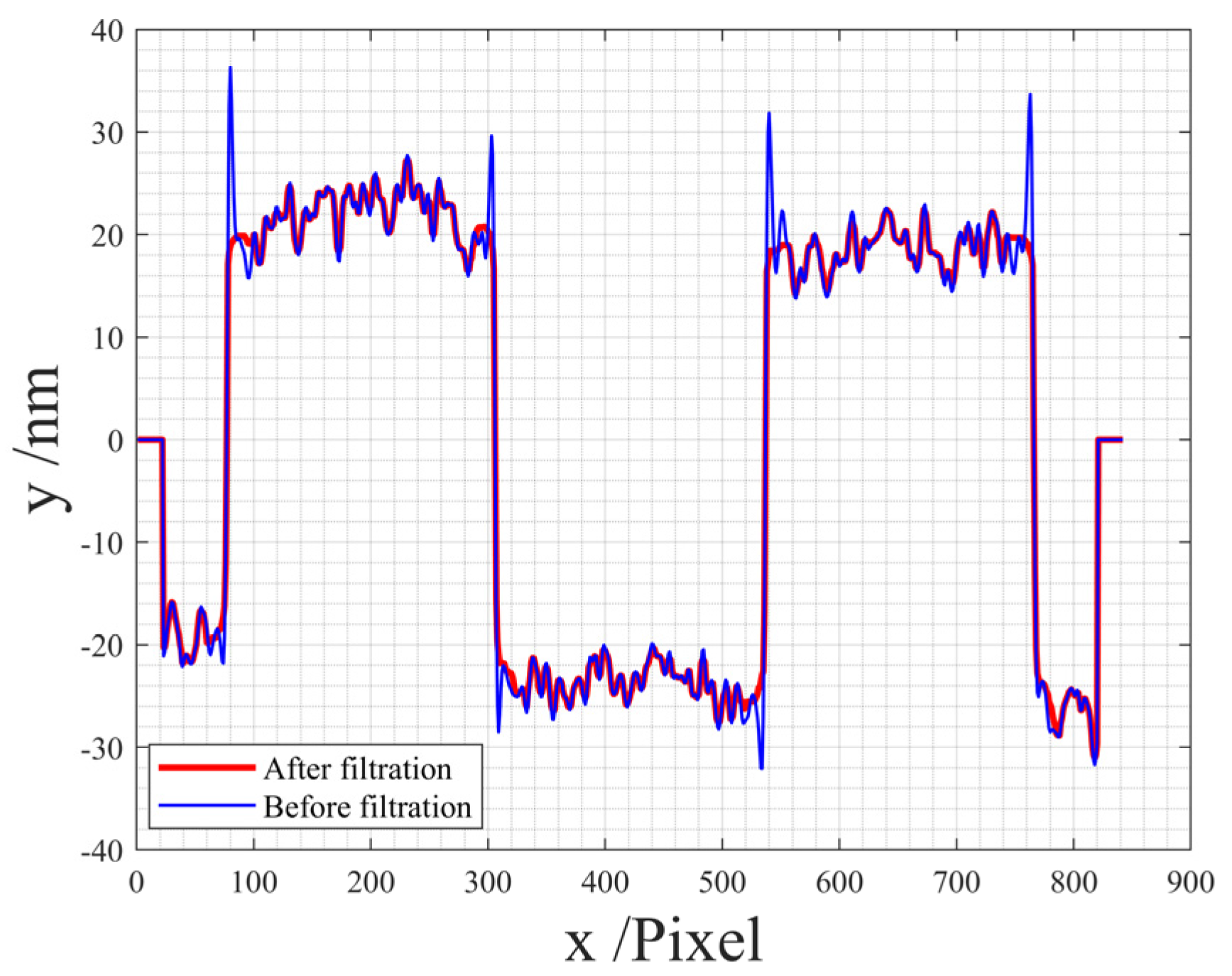
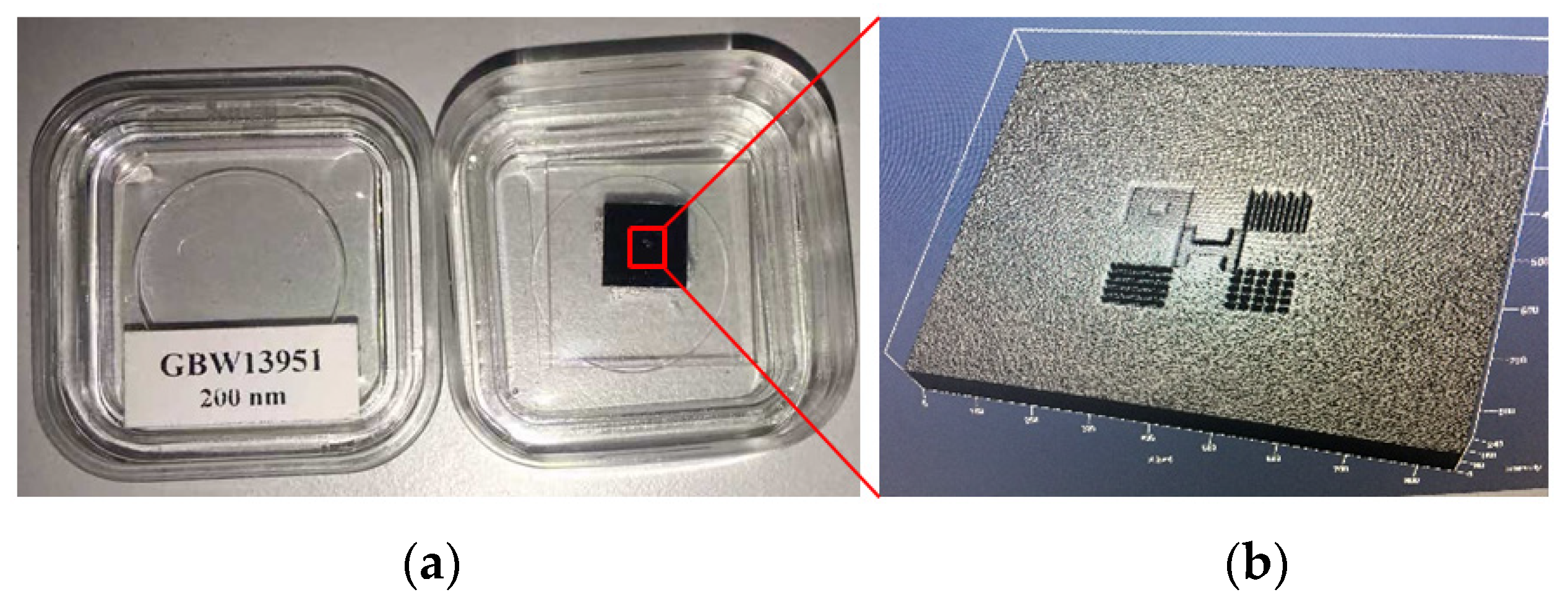
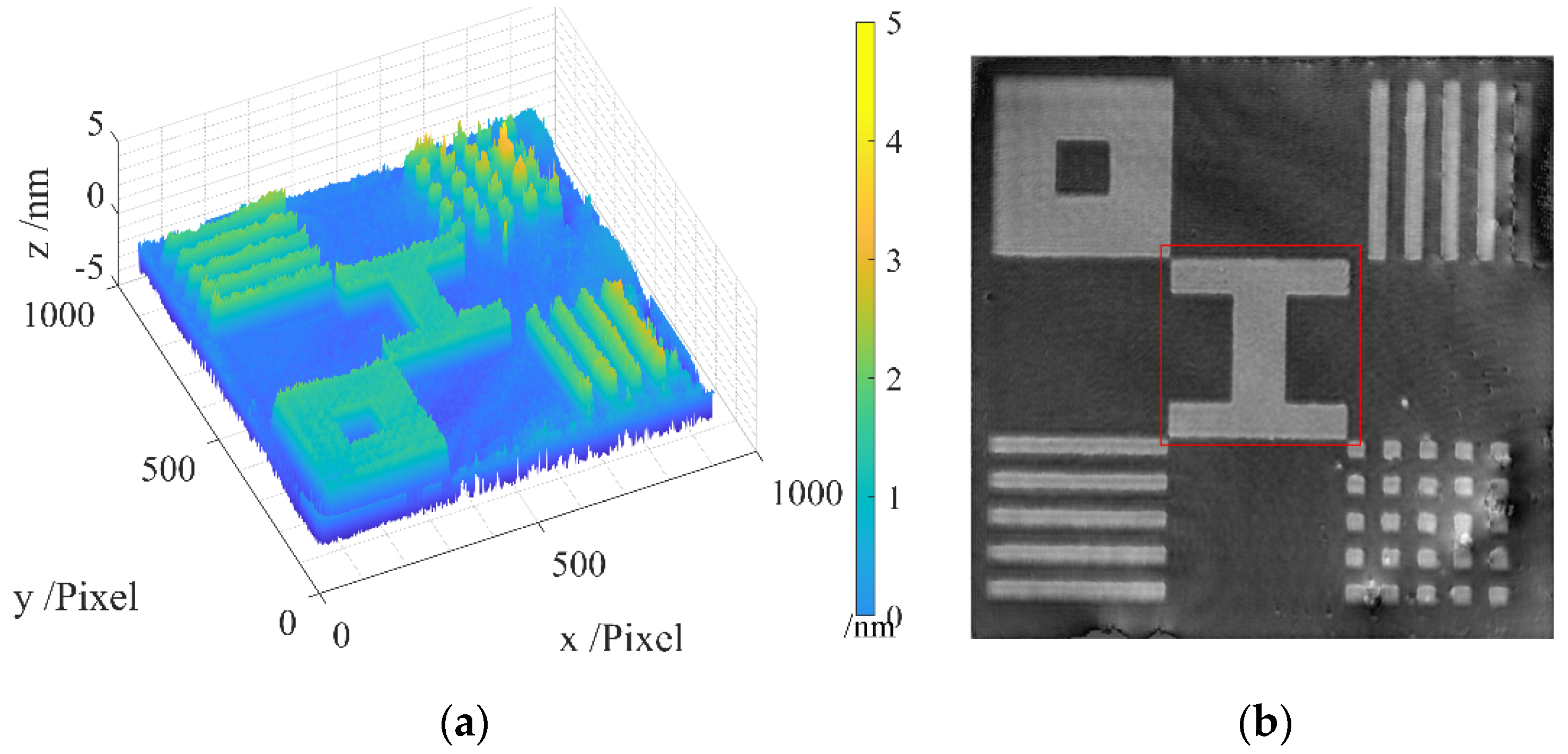
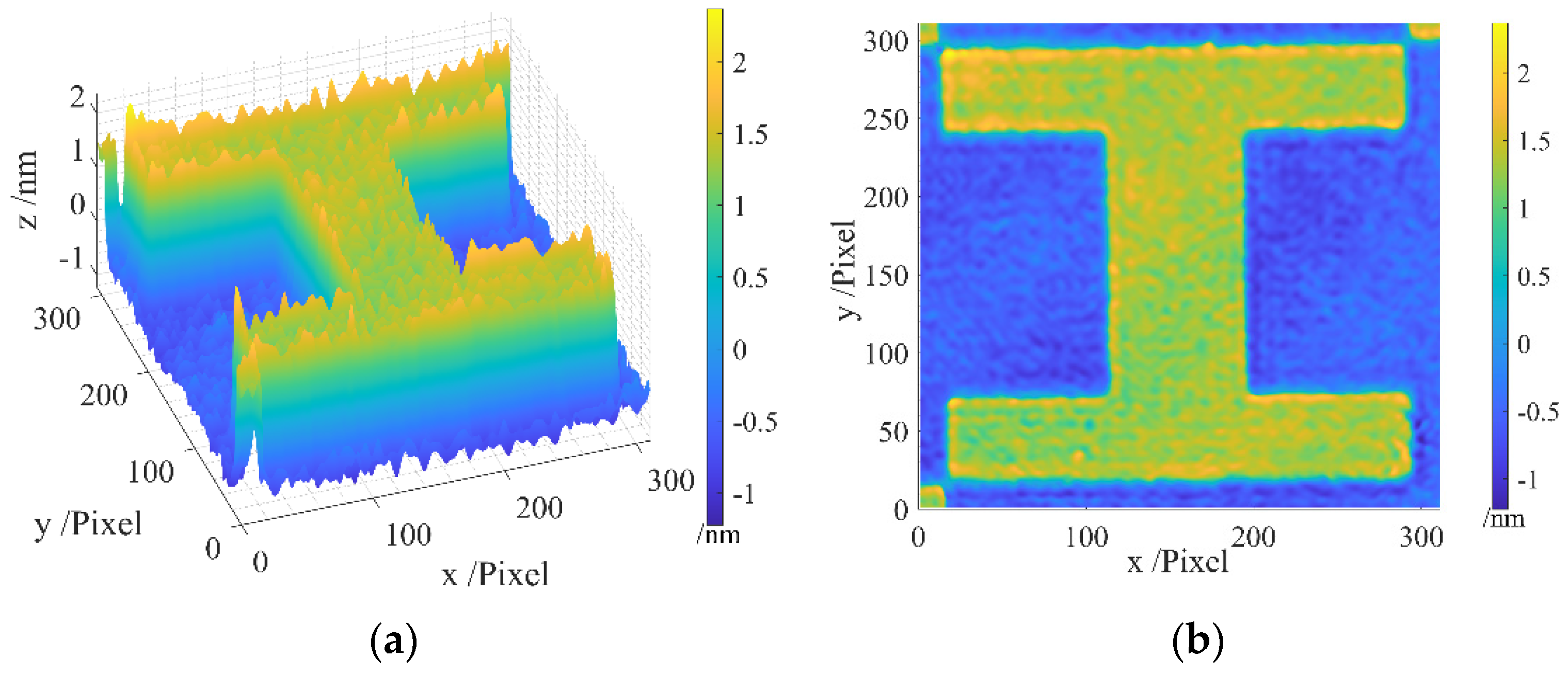
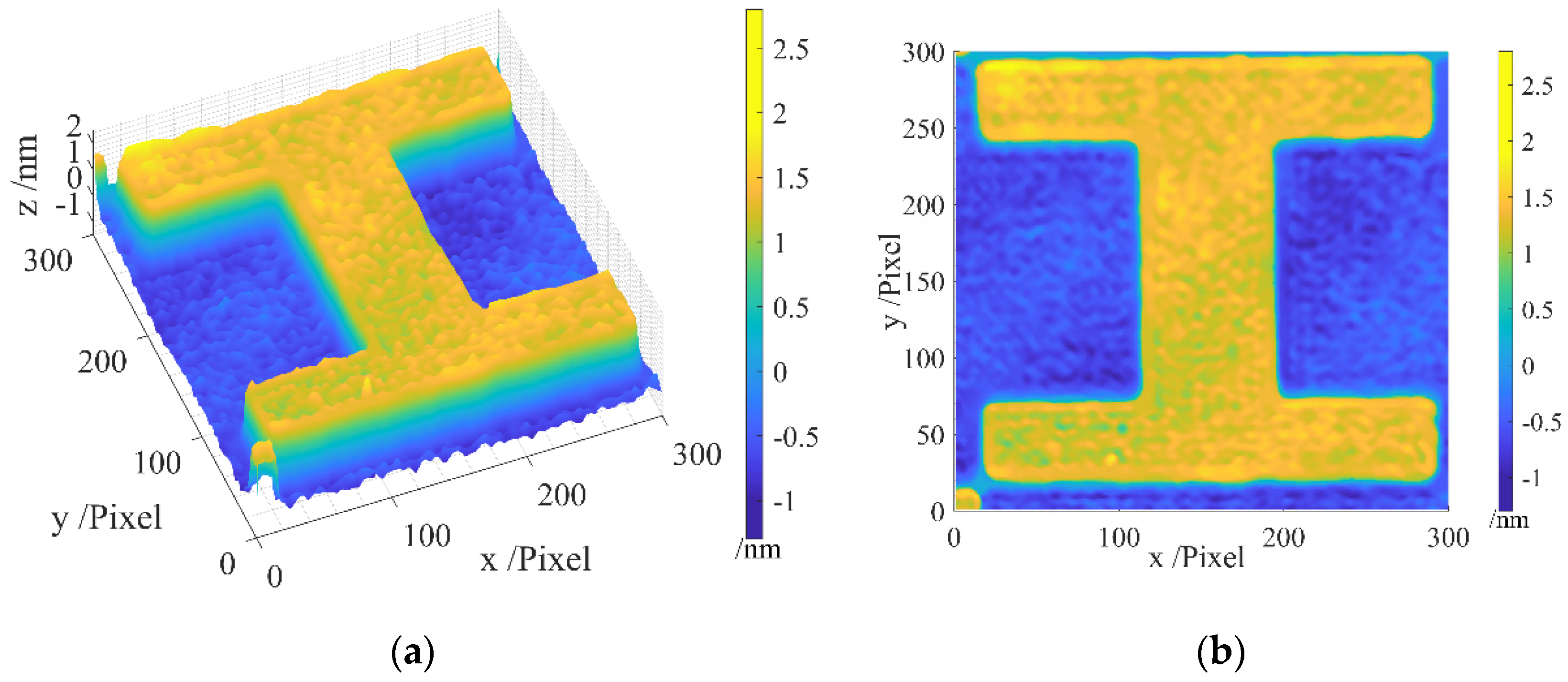
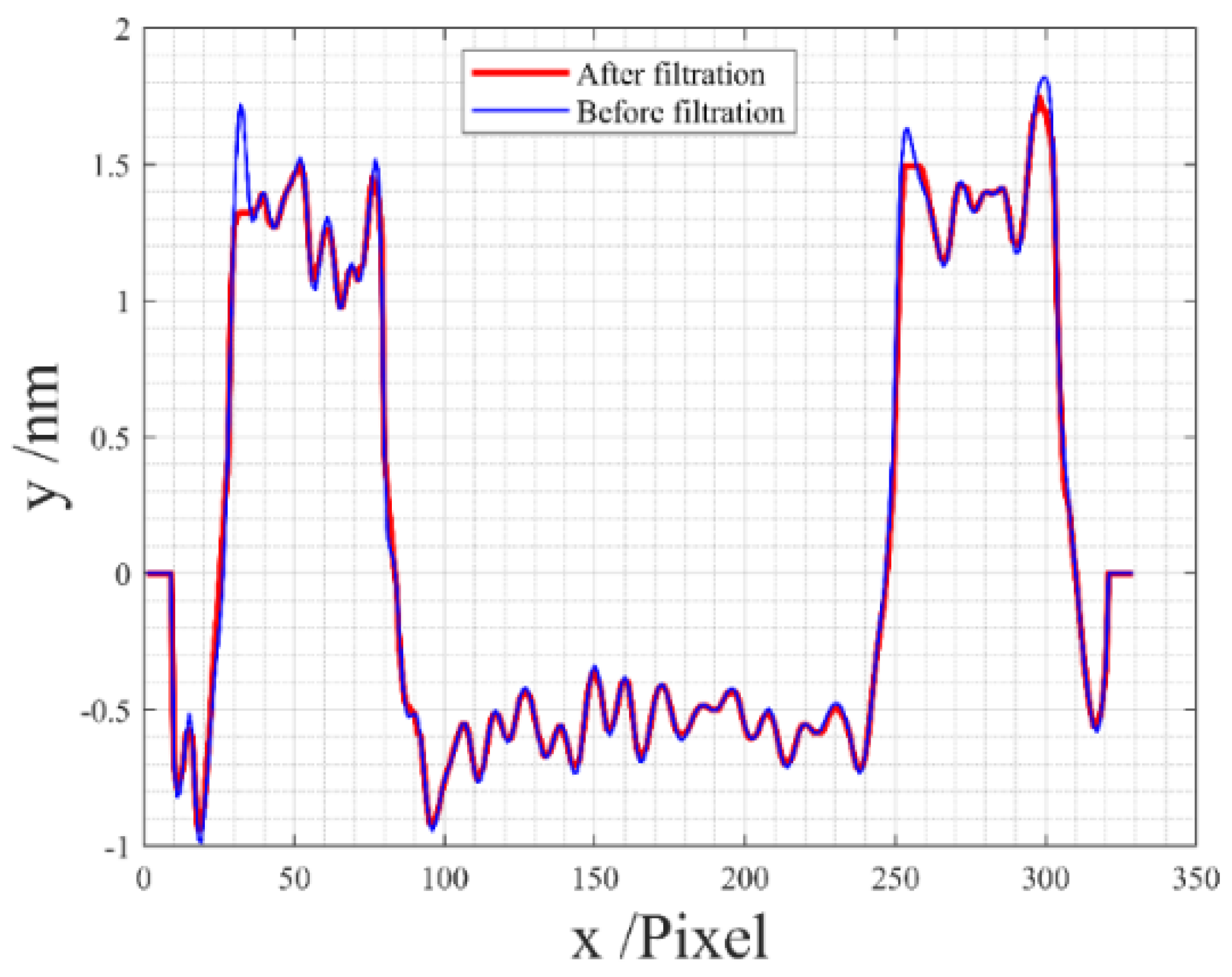
Disclaimer/Publisher’s Note: The statements, opinions and data contained in all publications are solely those of the individual author(s) and contributor(s) and not of MDPI and/or the editor(s). MDPI and/or the editor(s) disclaim responsibility for any injury to people or property resulting from any ideas, methods, instructions or products referred to in the content. |
© 2024 by the authors. Licensee MDPI, Basel, Switzerland. This article is an open access article distributed under the terms and conditions of the Creative Commons Attribution (CC BY) license (https://creativecommons.org/licenses/by/4.0/).
Share and Cite
Wei, J.; Wu, J.; Wang, C. Standard-Deviation-Based Adaptive Median Filter for Elimination of Batwing Effects in Step Microstructure Measurement Using Digital Holography. Sensors 2024, 24, 5928. https://doi.org/10.3390/s24185928
Wei J, Wu J, Wang C. Standard-Deviation-Based Adaptive Median Filter for Elimination of Batwing Effects in Step Microstructure Measurement Using Digital Holography. Sensors. 2024; 24(18):5928. https://doi.org/10.3390/s24185928
Chicago/Turabian StyleWei, Jiasi, Junjie Wu, and Chen Wang. 2024. "Standard-Deviation-Based Adaptive Median Filter for Elimination of Batwing Effects in Step Microstructure Measurement Using Digital Holography" Sensors 24, no. 18: 5928. https://doi.org/10.3390/s24185928





